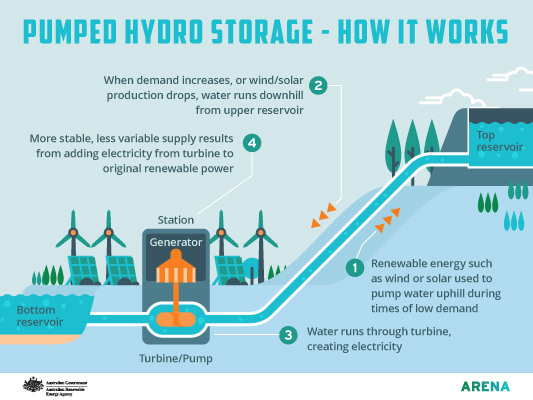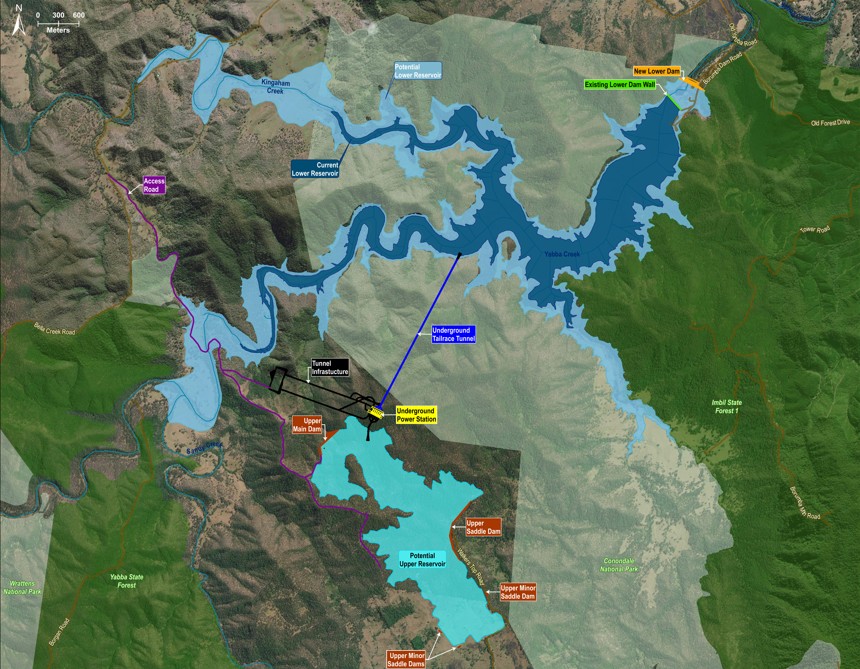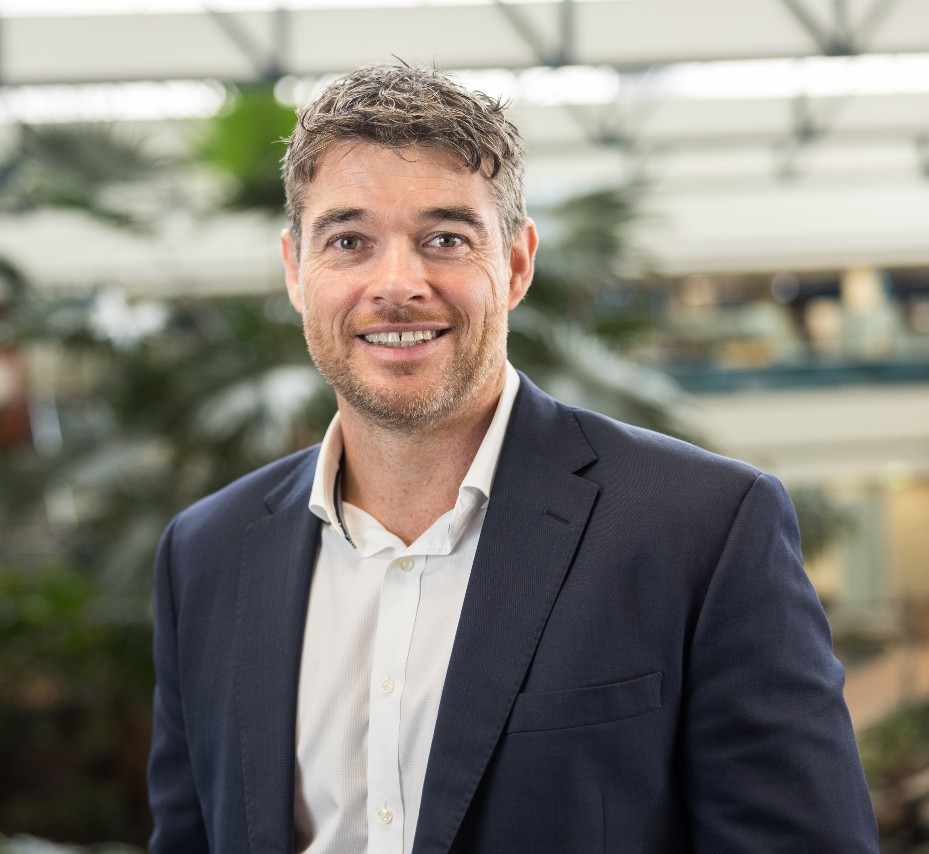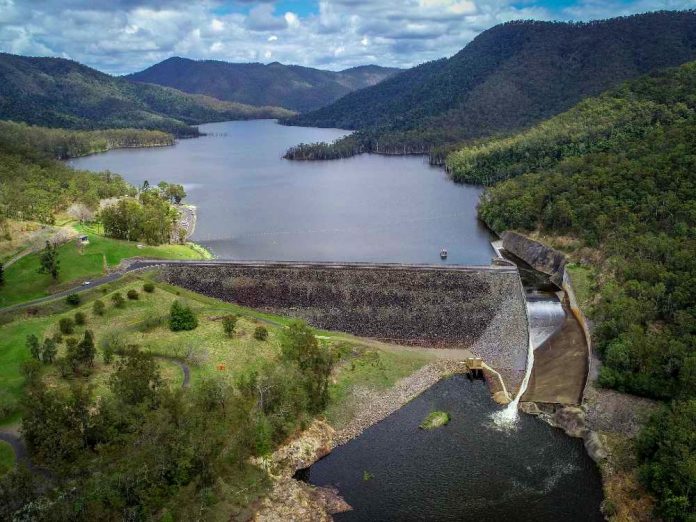The region could become a clean energy powerhouse with a huge multibillion-dollar hydro project that would be Queensland’s answer to Snowy 2.0.
The State Government has selected Borumba Dam, near Imbil, for Queensland’s largest pumped hydro, generating up to 2000MW of on-demand power from moving water.
The project would be ten times bigger than the state’s largest hydro at Wivenhoe (570MW).
It would also generate almost the same amount of electricity as the much-hyped Snowy 2.0 expansion (2000MW) in NSW.
The project would be able to generate enough electricity to power between 1.5 and 2 million homes which the Queensland Government said would help reduce household bills.
Borumba Dam was identified in the Qld Hydro Study as the first site — and one of the best — as the state looks to shift away from coal-fired power and progress to 50 per cent renewables by 2030.
A suite of investigations are under way at the dam, including geological drilling, after the government invested $22 million for detailed design and cost analysis.
Powerlink is undertaking the business case which will include engineering, hydrological modelling, geological testing, an assessment of environmental impacts and community consultation.
Some community consultation has been done already and more sessions are planned for July 13 and 14 (scroll down for details).
Powerlink’s project director (pumped hydro developments) Chris Evans told Sunshine Coast News a full report woud be handed to the Queensland Government by the end of the first quarter of 2023, for a final decision.
If approved, the hydro facility would be built with a workforce of 2000 people over five years and would be operational by the end of the decade, Mr Evans said.
However it will also need federal government funding.
Borumba Dam was completed across Yabba Creek in the Mary Valley in 1963 (upgraded in 1997) and stores water for drinking and irrigation, and is a popular for picnics and barbecues, boating and fishing and water sports like canoeing.
Stay up-to-date with Sunshine Coast news. SUBSCRIBE at the top of this article to receive our FREE daily news bulletin.
How does hydro work?
Mr Evans explained the pumped hydro project would work by releasing water from a higher dam into a lower dam, via a tunnel, with the water passing through a giant turbine.
As the water passes through the turbine blades, it drives the generator to convert the motion into electrical energy.
During the day when the sun is shining, clean solar energy would be used to pump water from the lower dam to the top dam.
Then at night, the water will be released from the top dam, through the turbine to the lower dam, creating the power.

For this to happen at Borumba Dam, Mr Evans explained that a new top dam of 70 000ML would have to be built in the hills south-west of the current reservoir.
This would mean building a new dam wall on land owned by Powerlink.
The current dam would become the lower reservoir, but it would have to be expanded to create more storage (growing from 46,000ML to 230,000ML).
This would require constructing a new, higher, dam wall immediately downstream and inundating more land, including 95 hectares of national park plus state forest.
Mr Evans said to generate the power, an underground power station would have to be built and linked to the two dams with tunnels.
Two transmission lines would also have to be erected to transport electricity to the grid, with power lines travelling 50km north to Woolooga and around 70km south-west to Tarong (this would form part of the investigations).

Mr Evans explained that hydro power was a form of renewable energy that was “less variable” than solar and wind.
“There is a lot of solar and wind in Queensland which can be variable and intermittent because it relies on how much sun and wind there is,” he said.
“The beauty of hydro is that you can control when you generate electricity, so you can generate it depending on when solar and wind are operating, and manage the power system.”
Mr Evans said Borumba Dam had been identified as a potential hydro site as far back as the 80s and signs in the area had made this clear to locals.
The location was considered ideal because only a short distance would exist between the two reservoirs (2.7km).
The significant elevation difference between the two dams of 300m would mean much shorter tunnels would have to be built.
“For comparison, Snowy has 27km of tunnels whereas we would only have to build 2.7km of tunnels so it’s a very good project,” he said.
Impacts and consultation

Investigations are in full swing at the dam and locals have been asking all kinds of questions such what impact inundating the lower reservoir will have on amenities.
Other topics have been around the timing and effects on the community of construction such as truck and traffic movements.
Mr Evans said people who had attended the two drop-in sessions held so far in Gympie and Imbil were asking “very good questions”, some of which Powerlink did not have the answers to yet.
He said most of the public feedback had been positive because “I think people realise the need for more renewables,” he said.
Two more drop-in sessions are planned this month:
Session 1
When: Wednesday 13 July 2022, between 3pm and 7pm
Where: Mary Valley Memorial Hall (Imbil RSL Hall), 127 Yabba Road, Imbil
Session 2
When: Thursday 14 July 2022, between 3pm and 6pm
Where: The Pavilion Conference and Reception Centre (Gympie Showgrounds), Adrian McClintock Park, 77 Exhibition Road, Southside, Gympie
To learn more about the Borumba Dam Pumped Hydro Project visit the Powerlink website.





